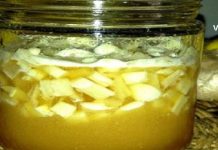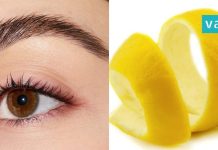In today’s world, where colorful packaging and delicious flavors capture children’s attention instantly, many of the most beloved snacks and sweets hide a darker side. Unfortunately, some of the most popular treats among children are made with substances that are not only unhealthy but potentially dangerous to their long-term well-being. What’s especially alarming is the use of artificial food colorings and flavors derived from petroleum-based chemicals, which are known to be associated with serious health problems, including cancer. This article highlights some of the most common treats you might be giving your child — without realizing the risks involved — and explains why it may be time to reconsider.
M&M’s – A Rainbow of Risk
It’s safe to say that nearly everyone has tried M&M’s at some point. These small, colorful chocolate candies are loved by kids and adults alike. However, beneath the attractive and playful colors lies a concerning truth: the vibrant hues used in M&M’s are created using synthetic dyes, many of which are derived from petroleum — the same substance used to make fuel and other industrial products.
Particularly concerning are the dyes used to produce the red, yellow, and blue shades. These include Yellow #5, Yellow #6, Red #40, and Blue #1, all of which have been linked to various health issues. Studies have shown that such artificial colorings can lead to hyperactivity in children and may even contribute to the development of cancerous cells in the brain. In addition, some children may experience allergic reactions to these dyes, ranging from skin rashes to more severe immune responses. Despite their wide usage, many of these dyes have been banned or restricted in European countries, yet they remain legal and common in products sold in the United States and other regions.
Cheetos – Flavor and Color Straight from the Lab
Cheetos, with their intense orange color and cheesy flavor, are another snack that has become a staple in many households. While they may taste irresistible, it’s important to understand what gives them their signature characteristics.
The bright orange hue of Cheetos is not a result of natural cheese or spices but is primarily achieved through artificial coloring, most notably Yellow #6. This dye, like others mentioned, is made from petroleum products. Moreover, the flavoring in Cheetos is far from natural. It often contains a mix of synthetic compounds such as methyl benzoate and ethyl methylphenylglycidate — substances you would expect to find in a chemistry lab rather than a snack bag.
When consumed regularly, these chemicals can build up in the body and have been associated with various toxic effects. Long-term consumption may increase the risk of chronic diseases, including different types of cancer. Furthermore, some research suggests that these additives may interfere with the nervous system and contribute to behavioral issues in children.
Gummy Candies – Sweet, Chewy, and Potentially Harmful
Gummy candies, often brightly colored and fruit-flavored, are another favorite among children. Though they seem innocent, these chewy treats often contain a cocktail of artificial colorings, flavors, and preservatives that pose a risk to health.
The vibrant appearance of gummies is achieved using the same petroleum-derived dyes found in other snacks. These include Red #3, Blue #1, and Yellow #5, among others. Alongside these, many gummy products also contain high-fructose corn syrup and other artificial sweeteners, which have been linked to obesity, diabetes, and metabolic disorders. While children may crave the taste and texture of these candies, parents should be cautious about how frequently they allow such products into their child’s diet.
Final Thoughts
While it’s nearly impossible to avoid all processed foods, especially with the variety and marketing aimed at children, it’s essential for parents to be informed. Not all snacks are created equal, and many of the most attractive ones hide potentially dangerous ingredients behind their colorful facades.
Reading food labels, choosing natural alternatives, and promoting whole foods like fruits, nuts, and homemade treats can go a long way in protecting children’s health. As awareness grows, hopefully more manufacturers will be held accountable, and healthier options will become more accessible.
Until then, staying educated and making conscious decisions remain our best tools in safeguarding our children from the hidden risks in their favorite snacks.


















